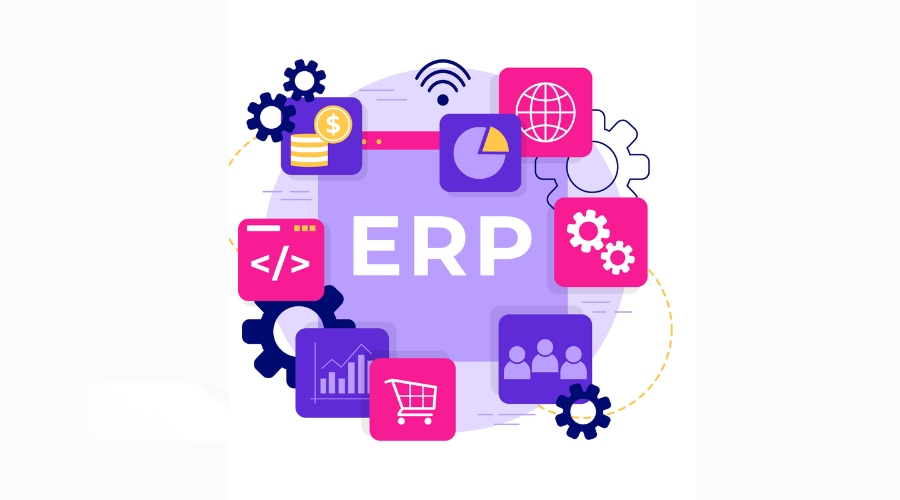Implementing an ERP (Enterprise Resource Planning) system can revolutionize the way businesses operate. By integrating various functions into a single cohesive system, ERP solutions enhance coordination, boost productivity, and offer substantial cost savings. However, achieving a successful ERP implementation demands meticulous planning and execution. This guide provides essential tips for companies to ensure a smooth and effective ERP deployment.
Introduction
In today’s business landscape, ERP systems are pivotal for companies striving to streamline operations, enhance data accuracy, and improve decision-making. Implementing an ERP system, however, can be a complex endeavor. This guide will cover essential tips for companies, from the initial planning phase and selecting the right system to training employees and maintaining the system post-implementation.
ERP Tips for Companies
ERP systems unify diverse business processes, including finance, human resources, supply chain management, and customer relationship management, into a single platform. This integration facilitates seamless data flow, reduces redundancy, and boosts overall operational efficiency. Recognizing the significance of ERP is the foundational step toward a successful implementation.
Defining Clear Objectives
Before embarking on ERP implementation, it is crucial for companies to define clear goals and objectives. Whether the aim is to enhance operational efficiency, cut costs, or improve data accuracy, having well-defined objectives will guide the implementation process and provide benchmarks for success.
Choosing the Right ERP System
Selecting an appropriate ERP system is critical. Companies should assess various ERP solutions based on their specific needs, scalability, and cost. It is essential to choose a system that aligns with existing business processes and can accommodate future growth.
Involving Key Stakeholders
ERP implementation impacts multiple departments within an organization. Engaging key stakeholders from the outset ensures their needs and concerns are addressed, fostering buy-in and support that are vital for a successful ERP deployment.
Conducting a Thorough Needs Analysis
A comprehensive needs analysis is essential to identify the specific requirements of your business. This analysis should encompass all operational aspects and pinpoint areas where the ERP system can deliver improvements. It also aids in customizing the ERP system to meet unique business needs.
Planning the Implementation Process
Effective planning is integral to ERP implementation. Develop a detailed project plan that includes timelines, milestones, and responsibilities. This plan should account for potential risks and include strategies for mitigation.
Choosing the Right Implementation Partner
Partnering with an experienced ERP implementation provider can significantly influence the success of the project. Select a partner with a strong track record, industry expertise, and positive customer references.
Data Migration Strategy
Data migration is a critical component of ERP implementation. Ensure that data is clean, accurate, and prepared for migration. Create a comprehensive data migration strategy that includes data mapping, testing, and validation to ensure a smooth transition.
Customizing the ERP System
While ERP systems offer standard features, customization is often necessary to align the system with your specific business processes. Collaborate with your implementation partner to identify and implement necessary customizations without complicating the system.
Training Employees
Effective training is crucial for the successful adoption of the ERP system. Provide thorough training to all employees who will interact with the system, covering its functionalities, best practices, and troubleshooting techniques.
Testing the System
Thorough testing is essential to ensure that the ERP system functions correctly and meets business requirements. Perform various tests, including unit, integration, and user acceptance tests, to identify and address any issues before going live.
Go-Live Strategy
The go-live phase is pivotal. Develop a detailed go-live strategy that includes a timeline, cutover plan, and communication plan. Ensure that support resources are available to address any issues that may arise during this phase.
Post-Implementation Support
ERP implementation extends beyond the go-live phase. Ongoing support is essential for resolving issues, providing additional training, and ensuring that the system continues to meet business needs. Regular reviews and updates are necessary to keep the system optimized.
Monitoring and Evaluation
Continuous monitoring and evaluation are crucial to ensure that the ERP system delivers the expected benefits. Utilize key performance indicators (KPIs) to assess the system’s performance and identify areas for improvement.
Feedback and Improvement
Collecting feedback from users is essential for continuous improvement. Regularly gather and analyze feedback to identify pain points and opportunities for enhancement. This proactive approach helps maintain high system efficiency and user satisfaction.
Benefits of ERP Systems
ERP systems offer numerous advantages, including enhanced efficiency, improved decision-making, and better data accuracy. Understanding these benefits can help companies build a compelling case for ERP implementation.
Improved Efficiency
ERP systems streamline business processes by integrating various functions into one system. This integration reduces redundancies, eliminates manual data entry, and enhances overall efficiency.
Better Decision-Making
ERP systems provide real-time data and analytics, enabling more informed decision-making. With accurate and up-to-date information, companies can make decisions that drive growth and profitability.
Enhanced Data Accuracy
By automating data entry and ensuring consistency across the organization, ERP systems improve data accuracy. This reliability is crucial for accurate reporting and analysis.
Cost Savings
Although the initial investment in an ERP system can be significant, the long-term cost savings are substantial. ERP systems help reduce operational costs by streamlining processes, boosting efficiency, and eliminating redundancies.
Scalability
ERP systems are designed to scale with your business. As your company grows, the ERP system can be customized and upgraded to meet new requirements, ensuring continued effectiveness.
Regulatory Compliance
ERP systems assist companies in meeting industry regulations and standards. They offer tools for monitoring and reporting compliance activities, minimizing the risk of non-compliance.
Challenges of ERP Implementation
Despite their benefits, ERP implementations can pose challenges. Being aware of these challenges and having strategies to address them is crucial for success.
Resistance to Change
Adopting a new system can be met with resistance from employees. Effective change management strategies, including clear communication, training, and stakeholder involvement, can help overcome this resistance.
High Costs
The cost of ERP implementation can be substantial. Companies should carefully evaluate the costs and benefits to ensure a positive return on investment and budget for unforeseen expenses.
Complexity
ERP systems are complex, and the implementation process can be challenging. Collaborating with experienced partners and following a detailed project plan can help manage this complexity.
Data Migration Issues
Data migration is often one of the most challenging aspects of ERP implementation. Ensuring data accuracy and integrity during migration is crucial. Developing a robust data migration strategy can help address these challenges.
Customization Challenges
While customization is often necessary, it can complicate the implementation process. Balancing customization with system simplicity is key to a successful implementation.
Ongoing Maintenance
ERP systems require ongoing maintenance and support. Allocate resources for regular updates, training, and system optimization to ensure long-term success.
Conclusion
Implementing an ERP system is a significant undertaking that requires careful planning, execution, and ongoing support. By following these tips, companies can achieve a smooth and successful ERP deployment that delivers lasting benefits. The key to success lies in thorough preparation, stakeholder involvement, and a commitment to continuous improvement.
FAQs
What are the key benefits of ERP systems for companies?
ERP systems enhance efficiency, improve decision-making, increase data accuracy, offer cost savings, provide scalability, and ensure regulatory compliance.
How can companies overcome resistance to ERP implementation?
Effective change management strategies, including clear communication, thorough training, and stakeholder involvement, can help overcome resistance.
What factors should companies consider when choosing an ERP system?
Consider your specific needs, the system’s scalability, cost, and its ability to integrate with existing processes when selecting an ERP system.
Why is data migration challenging in ERP implementation?
Data migration is challenging due to the need for accuracy and integrity during transfer. A robust data migration strategy is essential to mitigate these challenges.
How can companies ensure the successful adoption of an ERP system?
Comprehensive training, active stakeholder involvement, and robust post-implementation support are crucial for successful ERP adoption.
What is the importance of post-implementation support in ERP systems?
Post-implementation support is vital for addressing issues, providing additional training, and ensuring the ERP system continues to meet business needs. Regular reviews and updates are essential for maintaining system effectiveness.
Explore cutting-edge technology insights and updates at Kongotech.pro.



